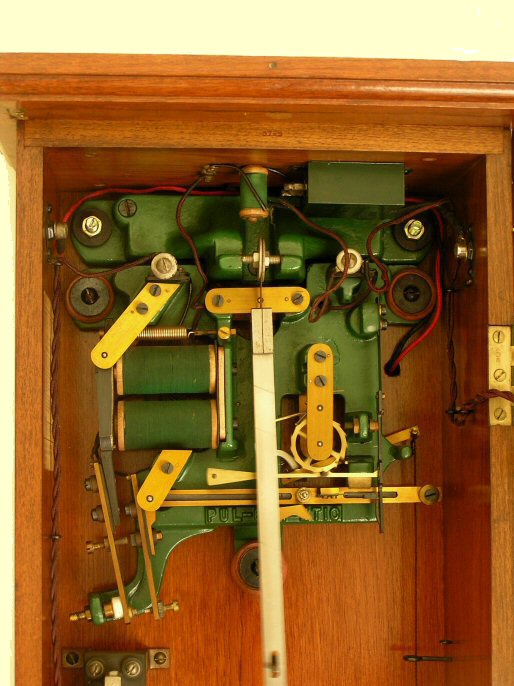The movement is one of the most robust units to be found in a master clock. Its rather chunky appearance though, means it cannot be said that it is a thing of beauty. The actual operation of it when it is running is a beauty to watch, but with the Gents, unlike a Synchronome or an ECS (English Clock Systems) master clock, it cannot be seen with the case closed. This is a great shame as to my mind it has a most graceful action. The gracefulness ends abruptly however when the clock impulses the pendulum every 30 seconds.
The Gents master clocks have to be the noisiest of master clocks it has to be said. Of the two I own the newer one is the worst and I tried to convince the family they would get used to it, but much like the bridge over the river Arnhem was to the allied forces in WW2, this was 'My Clock Too Far' and it was subsequently banished to my outside workshop. The earlier 1935 example is considerably quieter and resides happily in the lounge.
It is possible to quieten these clocks down so the resetting is quieter. This is done by mounting the unit with rubber interposed between the case and the wall, which is what was done for the clock in the lounge. Even the all the mountings are rubber mounted. Also making sure all the felt pads and rubber mounts are all in good order will help as well.

Early clocks had coil insulation of green silk

Old Fashioned Attention to Detail






